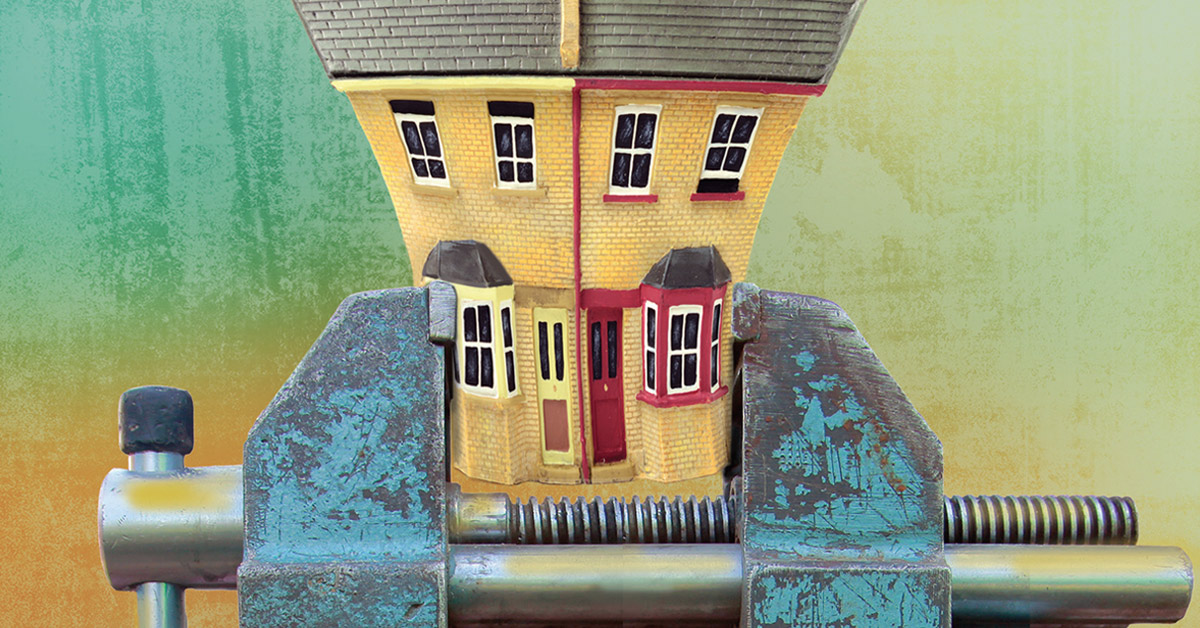Discussions on the domestic economy generally touch upon two metrics: gross domestic product (GDP) and jobs. GDP is the total value of all goods and services produced by a nation, a broad measure of the size of the economy. Recessions occur when GDP decreases for two consecutive quarters.
The average person may not understand exactly what GDP is, but everyone knows what a job is. The massive job loss consequent to the COVID-19 pandemic has affected the nation to an extent never before seen. There is no real road map for providing economic recovery from this since nothing similar has happened before.
The loss of jobs and other fallout from the pandemic are going to affect housing and mortgage finance in ways never before seen — and at a speed never before seen. Originators can look for signs of what’s to come for the mortgage industry by understanding what’s occurring now.
Massive losses
In February 2020, the U.S. economy had 152.5 million jobs. The unemployment rate was 3.5%. On Jan. 21, 2020, the Centers for Disease Control and Prevention (CDC) announced the first U.S. case of COVID-19 in a Snohomish County, Washington, resident who had returned from China six days earlier.
On Jan, 31, 2020, the Trump administration declared a public health emergency due to the coronavirus outbreak nearly a month before the first U.S. death had been announced. In mid-March, job losses started increasing dramatically. The April jobs report from the U.S. Bureau of Labor Statistics (BLS) showed 131 million jobs. More than 20 million jobs had been lost in two months.
More than twice as many jobs were lost in these two months (March and April) as were lost from 2007 through 2009 during the Great Recession. After the initial lockdowns were lifted, jobs started to bounce back. By December 2020, however, about half of the 20 million jobs lost were still gone. Job recovery had slowed to a crawl.
An accurate estimate as to when these 10 million jobs will return is not possible until the pandemic is controlled enough that most everyone feels comfortable in their daily lives. This includes going to the store, going to the office, getting on an elevator, getting on a plane, or sitting next to someone on public transit, in a theater or in a stadium with 40,000 strangers.
Rental woes
The coronavirus-related shutdowns most strongly affected jobs in four sectors: leisure and hospitality; retail trade; professional and business services; and health care and social services. These sectors accounted for 49% of all jobs pre-pandemic, 68% of jobs lost in March and April, and 78% of the jobs gained from May through September of last year.
One might guess that a massive number of people having a potentially lethal virus would have increased health care expenses and jobs, but that is not the whole of the industry. Much of health care is elective. Many people skipped elective and diagnostic health care procedures they normally would have scheduled even when well.
School and day care closures had second-order effects. Labor participation decreased among families with young kids. This affected women more than men. With schools closed and children at home, women were more likely to stay at home to care for kids.
These job losses disproportionately affected renters. An April 2020 MarketWatch article indicated that more than half (53.5%) of renters reported losing their job due to shelter-in-place measures introduced in their town or city because of the COVID-19 pandemic. Many renters continue to struggle to pay rent and this puts pressure on land-lords, especially smaller ones.
Apartment rents in San Francisco, for example, fell by 24% in 2020. Lower rents, combined with eviction moratoriums, put small landlords at a disadvantage. Rent control locks in new, lower rents. This may cause revenue shortfall to be a long-term problem that creates the potential for late mortgage payments and foreclosures for rental properties.
The census bureau’s 2018 Rental Housing Finance Survey showed that slightly more than 40% of residential units are owned by individual investors. These people will likely have greater difficulty paying their mortgages and taxes, or maintaining their properties, than large corporate owners and real estate investment trusts.
Remote-work influence
Teleworking is not only about working from home. It also can enable employees to get their work done on their own schedule rather than on a 9-to-5 basis. For many, this enables them to intertwine work and personal activities. This could increase worker productivity.
Teleworking has advantages for both employers and employees. Employers do not have to pay salaries that fully cover the cost of living in major metropolitan areas, or that cover the cost of state income taxes in high income-tax states. They also can save on expenses associated with rents and utilities for workers who no longer are in the office. Employees do not have to endure the time and expense associated with commuting.
Between February and April of last year, the unemployment rate for workers who could work remotely increased by six percentage points while the rate for workers who could not rose by 14 percentage points, according to BLS. Twenty-nine percent of working professionals stated that they would quit their jobs if they couldn’t continue working remotely, according to an online survey of 1,022 professionals released this past January by LiveCareer, an online resume and job-search consulting service.
Although it is not yet possible to determine how many more jobs will permanently shift to a telecommuting model, it is certain that the number of telecommuters will remain higher than it was prior to 2020. Rents for commercial properties almost certainly will decline, and because the value of an office building depends heavily on gross rents, decreases in office-property values will potentially create problems for commercial mortgage lenders and borrowers.
Job losses are more likely to affect big cities. People who have more flexible work situations may move away to less costly locations.
Forbearance dilemma
As of March 14, 2021, the Mortgage Bankers Association reported that 5.05% of mortgages were in forbearance. This amounted to about 2.5 million loans. The share of Fannie Mae and Freddie Mac loans in forbearance was 2.83% while the share of Ginnie Mae loans in forbearance was 7.03%.
It’s unknown how many people will no longer be able to pay their mortgages after forbearance programs end. This largely depends on when and how many jobs return. Fannie Mae and Freddie Mac addressed their anticipated forbearance losses with their adverse-market fee of 0.5% on most refinance transactions. Unlike the situation in 2008, the government-sponsored enterprises are aware of potential losses and have already created an income stream to deal with them.
The longer the pandemic continues to affect jobs, however, the greater the losses associated with forbearance will be. This will be of concern as the Federal Housing Finance Agency secures the necessary capital to take Fannie Mae and Freddie Mac out of conservatorship.
City hardships
Job losses are more likely to affect big cities. People who have more flexible work situations may move away to less costly locations. In addition, the ability of large cities to not suffer significant job and population losses depends on the public’s use of mass transit.
After the Great Recession, nationwide transit ridership fell through 2010, recovered slightly for a few years and has steadily decreased since 2014, according to a Cato Institute report. Mass transit, especially underground rail transit, is expensive to operate and was suffering fiscally before the pandemic. Cities will, of necessity, approach this by eliminating routes deemed as nonessential.
Before the pandemic, 5.1% of U.S. workers commuted regularly by public transportation, according to census data. Only eight of the 15 largest U.S. cities had public-transit rates over 10% in 2018. Loss or diminution of public transit diminishes the value of real estate in affected cities. According to the National Association of Realtors, this “transit premium” increase can range from as little as a few percent to more than 150%.
Big cities are not only about housing and jobs. When a city is large enough, it can support museums, art galleries, theaters, operas, ballets, symphonies, professional sports franchises and concerts. While these amenities may induce more people to stay, they also require overhead expenses, some of which are provided by public agencies. It is likely that a long-lasting effect of the COVID-19 pandemic will be a lack of fiscal sustainability for state and local governments, many of which are already faced with massively underfunded public pensions.
● ● ●
The ongoing health crisis will put these pressures — and more — on housing and property values. Originators would do well to understand what is happening and what it may mean for the future of the mortgage industry. ●
Author
-

Dick Lepre is a loan agent for CrossCountry Mortgage LLC. He has been in the mortgage business since 1992 and has been writing a weekly email newsletter on macroeconomics, mortgages and housing since 1995. Lepre (NMLS No. 302379) is from New York City, but he has lived in the San Francisco Bay Area since 1968. He has a degree in physics from Notre Dame. Follow him on Twitter @dicklepre.
View all posts







